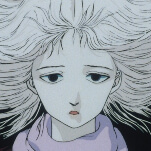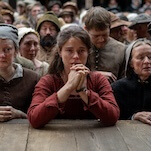In 1995, Chinese-American writer Lisa See published On Gold Mountain, an account of her family’s migration from China to the United States. Since then, she’s become a novelist of note, publishing literary work (Snow Flower And The Secret Fan, Peony In Love) and three mystery novels in the Red Princess series. With Shanghai Girls, she returns to the setting of On Gold Mountain, fictionalizing its Los Angeles Chinatown segments in the service of a story about two sisters forced by war and poverty to marry and come to America. While the characters are simpler and more starkly drawn than the radiant women of Peony In Love, See balances an abundance of historical detail with the wrenching emotions of daughterhood and motherhood, creating a richly ornamented page-turner.
Pearl, the first-person narrator, enjoys life as a professional “beautiful girl” in 1930s Shanghai, “the Paris of the East.” While their father’s rickshaw business crumbles under the weight of gambling debts, Pearl and her sister May pose for popular artists and adorn calendars all over the city. But escaping the loan sharks and the Japanese “dwarf bandits” means marrying the sons of a merchant who has emigrated to California, selling their mother’s jewelry for a cramped passage across the Pacific, and enduring months of interrogation at Angel Island. Because their father-in-law is aware that May didn’t consummate her union with his mentally disabled younger son, the sisters decide to pass off May’s baby, born in detention, as Pearl’s. Their entry into the U.S. is predicated on a web of lies—not just the ones they know and perpetrate, but the ones they discover once installed in the Louie family’s supposedly thriving business ventures. Instead of a wealthy “Gold Mountain man,” a Chinese native who makes his fortune in America and returns to his village in splendor, the girls find a cramped apartment full of “paper sons” with fake identity papers, and a collection of curio shops and cheap diners selling fake Chinese culture to the tourists in Los Angeles’ China City complex.
See’s language is on shakier footing in the 20th century than in her previous novels; without the pervasive idioms of a traditional culture, her dialogue and descriptions have a plain, sometimes shoddy quality. Yet they’re well suited to the flimsy facades of Chinese identity that the beautiful girls find in California. As Pearl embraces the Chinese customs for which she used to mock her mother and worries about the company her daughter keeps at the height of the Red Scare, her struggle to find rest between cultures and across generations allows no easy answers and no soap-opera endings.









































